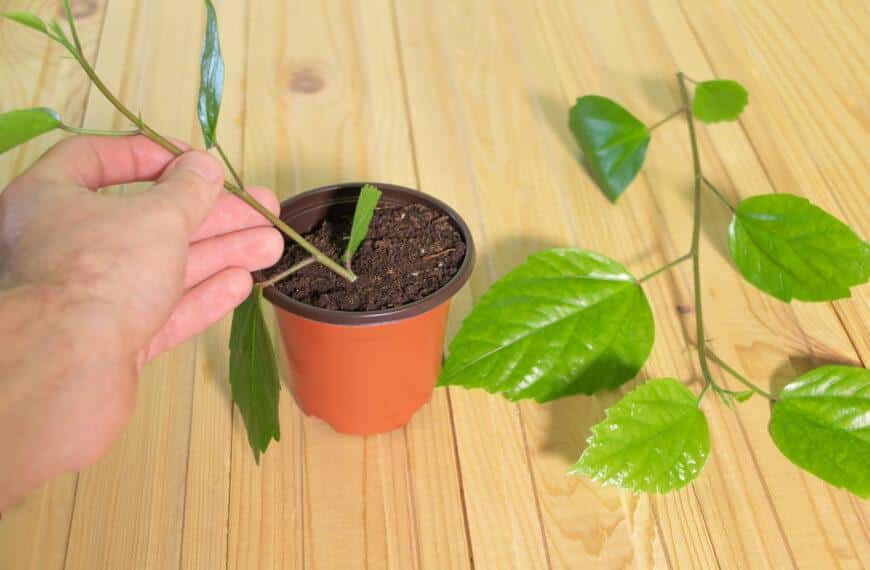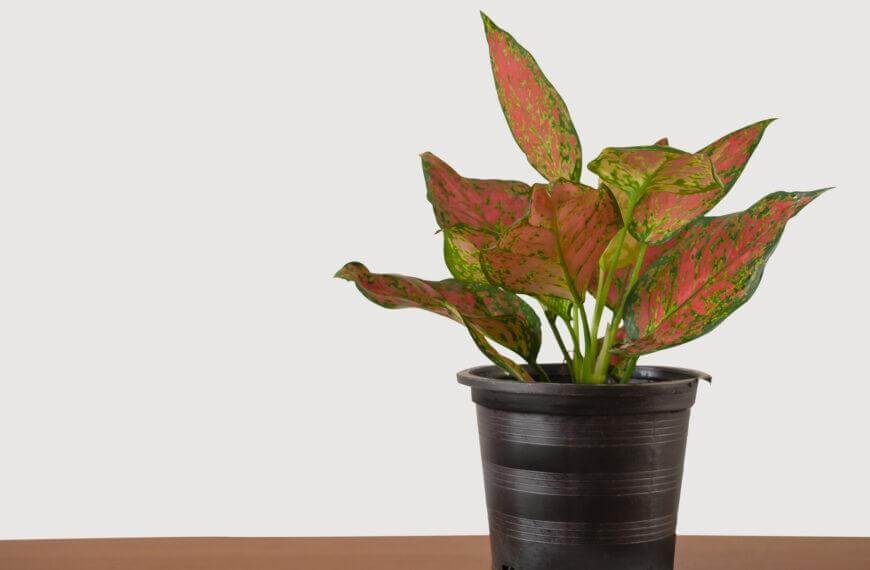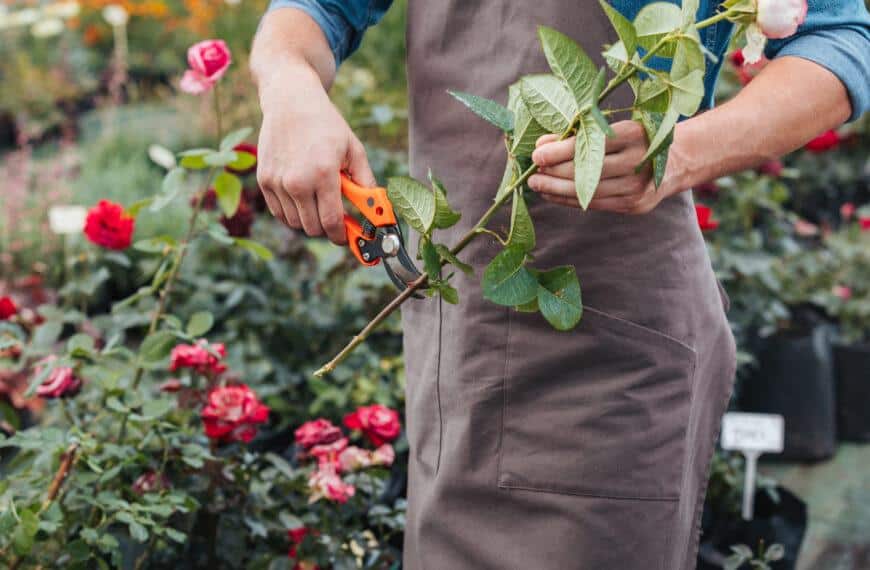All about The Best Low Maintenance Plants for Your Garden
Low Maintenance Plants
To make your indoor gardening experience more effortless, choose low maintenance plants. Benefits of these plants, examples to choose from and effective care tips are discussed further as you read on.
Benefits of Low Maintenance Plants
Low Maintenance Plants: An Easier Gardening Experience!
If you’re seeking to reduce gardening effort, look no further than low maintenance plants. They require minimal care – perfect for busy people or those without much gardening know-how.
- Save time and cash: Low maintenance plants need less water, fertilizer, and pruning, so your maintenance expenses and hours are reduced.
- No more stress: No need to constantly watch growth or worry about their health. Just sit back and enjoy the garden with no stress.
- Wide variety: There’s a vast selection of low maintenance plants to choose from. Succulents, shrubs, and more – something for everyone.
Busy folks or those seeking a stress-free gardening experience should consider low maintenance plants. Unlike high-maintenance options that need constant attention, these plants require little upkeep, but still bring beauty to your garden.
Pro Tip: Choose native plants for even less maintenance – they’re already adapted to the local climate and conditions.
Say goodbye to high-maintenance plants – hello to easy-breezy green buddies!
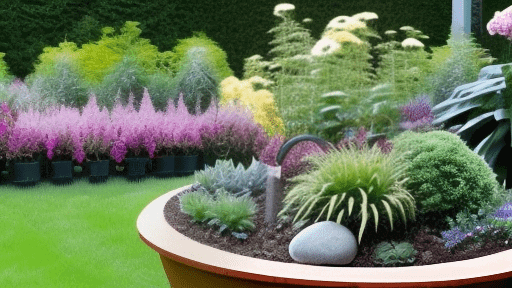
Examples of Low Maintenance Plants
Low maintenance plants are ideal for those who want a green area without dedicating much time for upkeep. Examples of such plants are: succulents, snake plants, and pothos. All of them require minimal attention and stay beautiful all year long.
Moreover, there are lots of other options that fit personal preferences and the environment. With low maintenance plants, you can have greenery in your living space without much effort.
Nowadays, it is becoming fashionable to decorate living spaces without wasting resources. People who opt for low maintenance plants understand the importance of preserving resources while keeping a natural atmosphere. As an example, spider plants are a great choice for those who want a pet with no responsibility of taking care of it.
Spider Plant
The Spider Plant is a great air-purifying greenery choice! Low maintenance for both inside and outside. It likes indirect sunlight and well-draining soil. Plus, it can reduce indoor pollutants like formaldehyde and benzene. Moderate watering is key to keep it alive – too much can cause root rot. Propagation is easy: snip off the “babies” on its stem and put into water until roots appear. Hang it in a basket or on a shelf to show off its trailing habit. To keep it healthy, avoid cold drafts and too much heat.
Pro Tip: Steam cleaning your Spider Plant will make it better at holding dust than just washing it. If you want a plant that won’t give up after one bad watering, the ZZ plant is the hardy one to get.
ZZ Plant
The ZZ plant is a popular, low maintenance choice for indoor gardeners. It is native to Africa and can tolerate moderate to bright light, infrequent watering and even neglect! Its glossy leaves add a touch of greenery and filter toxins from the air. It can grow up to three feet tall and is both drought and pest-resistant.
This plant is great for those who don’t have much time for gardening. However, be careful when handling its sap – it can cause skin irritation and is toxic if ingested.
Not so long ago, the ZZ plant was rare outside of Africa. But, thanks to advances in tissue culture, it is now available all over the world.
One gardener shared her experience with her ZZ plant after moving cross-country: despite being neglected, it made a full recovery within weeks when proper care was administered.
The ZZ plant is an excellent addition to any home or office environment, even for those who are not the most attentive gardeners! It’s like the cockroach of the plant world – you can hardly kill it!
Pothos
The Pothos is a popular choice for those looking for low maintenance foliage. It can survive in both bright and moderate light, needing minimal watering and being easy to propagate. Its cascading vines make it a beautiful addition to any space.
It is native to the Solomon Islands and was believed to cure eye diseases and aid fertility centuries ago. Nowadays, it is still a staple in many homes and offices due to its beauty and low maintenance nature. Snake plants are so undemanding, they could probably survive a nuclear apocalypse and still look good!
Snake Plant
Introducing the Snake Plant, also called Sansevieria trifasciata or Mother-In-Law’s Tongue. It’s perfect for those who struggle to keep plants alive. Here’s why:
- Takes low to high lighting.
- Needs minimal watering, can go a month without.
- Purifies air and removes toxins.
- Rarely suffers from disease or pests.
Plus, it converts carbon dioxide into oxygen at night, making it a great bedroom plant. Plus, it thrives in humid environments like bathrooms.
This plant has been around for centuries. Ancient Egyptians used it for medicinal reasons. They also believed it repels evil spirits and absorbs negativity, enhancing positive energy in its surroundings.
In conclusion, the Snake Plant is low maintenance with many benefits and unique features. It requires minimal care, so no wonder it’s still popular today. Even the most neglectful gardeners can keep these plants alive. That’s the trick for a green thumb!
Care Tips for Low Maintenance Plants
For those with a bustling life or little gardening knowledge, low maintenance plants may be ideal. Here are some tips:
- Pick plants that don’t need much watering and trimming.
- Give them the right environment with lots of light and suitable soil.
- Don’t transfer them often, it can harm them.
- Make sure they have proper drainage to stop waterlogging.
- Use organic fertilisers according to instructions.
Research the specific needs of each plant before buying. Low maintenance plants may still have unique requirements.
Bibliophiles know and appreciate the importance of gardening. Maybe low maintenance plants can be therapeutic? Watch out for medium-maintenance plants though, they demand attention!
Medium-Maintenance Plants
To achieve a balance between low and high maintenance indoor plants, turn to the medium-maintenance section with “Choosing the Right Indoor Plants: From Low Maintenance to Exotic Species”. This section offers benefits of medium-maintenance plants, examples of some popular ones, and care tips to help you keep them in excellent condition.
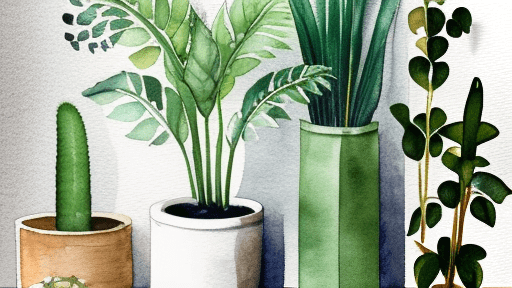
Benefits of Medium-Maintenance Plants
If you want a garden that won’t take too much time and effort to maintain, medium-maintenance plants are the ideal choice. These plants offer a great balance between low and high maintenance. Plus, they bring color and texture to gardens without being too overpowering.
Medium-maintenance plants are flexible, meaning they can adapt and thrive in various environments. They are usually hardy and long-lasting, and they can also improve air quality. For novice gardeners with busy lives, these plants are perfect!
Remember to choose plants that can survive in your region’s weather for optimal longevity. Go for medium-maintenance plants if you want to feel like a pro gardener with minimal stress and anxiety.
Examples of Medium-Maintenance Plants
Choose Medium-Maintenance Plants for a little effort and long-lasting rewards. These plants need regular watering, pruning, and fertilizing. They can also handle some neglect. Popular options include: Chrysanthemum, Spider Plant, Begonia, Geranium, Japanese Maple, and Rosemary.
Ensure good soil with well-draining properties and organic matter. Feed with organic fertilizers. Don’t overwater as this leads to root rot. Check the soil moisture before watering. By following these steps, your plants will thrive and bring joy. For maximum serenity, go for the Peace Lily – a low maintenance choice!
Peace Lily
Peace Lily: A Medium-Maintenance Plant!
This plant is quite popular for adding aesthetic value to indoor spaces. It requires moderate watering and well-draining soil. Low light conditions are just perfect for it, even under fluorescent lights!
Pruning is necessary for Peace Lily as it helps in removing dead or yellowing leaves.
What’s more amazing is that it has air-purifying properties, eliminating harmful toxins. Thus, it is an ideal plant for homes and offices.
For best growth, maintain moist soil, keep away from direct sunlight and fertilize with liquid fertilizer. Rubber plants are a great low maintenance option for those who want a pet but don’t want to feed or walk it!
Rubber Plant
Rubber Trees – A Medium-Maintenance Plant!
Ficus elastica, or rubber trees, are plants that require moderate attention. They have big, shiny leaves and a strong trunk, which makes them look great in any space.
For your rubber tree to stay healthy, make sure it gets lots of indirect sunlight. Water it when the soil is dry to touch. Too much water can cause root rot and the leaves to fall off. Wipe the leaves with a damp cloth to remove dust.
These plants also contain natural latex sap that can irritate skin. Wear gloves when pruning or handling them.
Bring a rubber tree into your house and enjoy beautiful decor, plus purify the air! With little effort, you’ll have a stylish home.
Fiddle Leaf Fig
The fiddle leaf fig, popular for its lush green leaves and tall stature, falls under the category of a medium-maintenance plant. It requires bright, indirect sunlight; consistent moisture; well-drained, rich soil; and warm temperatures. If not taken care of properly, root rot and pest infestations can occur. Pruning and consistent moisture in the soil are key to cultivating robust foliage.
Originating from West Africa, this plant has been used in traditional medicine for centuries. Its sap has been used to treat stomach pain, skin inflammations, and even snake bites. Plus, fiddle leaf figs purify the air by removing toxins inside your home.
It may take some effort to take care of these plants, but the rewards are worth it. A lush green tree adds life and vibrancy to your living space, while also improving air quality! If taking care of high-maintenance plants was easy, you wouldn’t be reading this article.
Care Tips for Medium-Maintenance Plants
Medium-maintenance plants need tender loving care! Different plants have varying needs. Here are some tips to keep ’em alive:
- Light and water: Figure out how much of each your plants need and make sure they get it.
- Climate control: Keep them in a temperature range they like – they need stable conditions to grow well.
- Fertilize wisely: Follow directions on how much to use. Don’t overuse or misuse!
- Maintenance schedule: Prune, deadhead, dust, transplant or repot your plants when you should.
Remember, different medium-maintenance plants require different things. Do your research and learn how to meet their needs.
Here’s something cool: plants can purify the air we breathe! NASA’s Clean Air Study found that certain indoor plants can remove toxins from the air. This promotes better clarity, productivity and health! So why date a high-maintenance partner when you can just buy a high-maintenance plant?
High-Maintenance Plants
To learn about high-maintenance indoor plants and add some drama to your indoor garden with exotic species, check out this section on Choosing the Right Indoor Plants. Discover the intriguing benefits and examples of high-maintenance plants, as well as helpful care tips to keep them thriving.
Benefits of High-Maintenance Plants
High-Maintenance Plants boast a variety of perks! These plants are often delicate and require extra care, but it’s worth it.
- Their foliage is unique and beautiful.
- Nurturing these plants has calming effects.
- They improve air quality and create an indoor ecosystem.
- Learning about plant biology and environmental awareness is encouraged.
- Gardening is a fulfilling hobby that boosts wellbeing.
- These plants add a nice touch to interiors.
Moreover, they can purify the air of toxins such as benzene, formaldehyde, carbon monoxide, and xylene. Plus, they can reduce stress levels. High-Maintenance Plants also improve focus and productivity, plus reduce noise pollution.
A close friend shared that her succulent was key to her self-care routine, bringing her immense joy. If you’re ready for a challenge, try keeping these plants alive – they require more effort than a clingy ex!
Examples of High-Maintenance Plants
High-maintenance plants need extra care and dedication. They demand regular watering, fertilizing, pruning, and pest control. Here are some examples:
- Orchids: Humid environment, indirect light, frequent watering.
- Roses: Pruning, fertilizing, spraying for pests and diseases.
- Bonsai trees: Trimming and shaping for artistic form.
- Fiddle leaf figs: Bright indirect sunlight, weekly soil checks.
- Carnivorous plants: Specialized soil mixes, distilled water, periodic feeding with live insects!
- Hydrangeas: Acidic soil and frequent deadheading.
Every high-maintenance plant has its own needs. For example, orchids may prefer bark-based soil or moss-based soil. Some rose varieties have different pruning styles.
Be careful not to overdo it with the fertilizer – it can be harmful.
Pro Tip: Consider your lifestyle before choosing a high-maintenance plant. They need time and dedication to stay alive. Orchids are divas – they need special attention, but their beauty makes it all worth it.
Orchids
Orchids are a high-maintenance species of plants. To keep them thriving, proper watering, fertilization and light exposure must be given. Water when the soil is dry. Use a balanced fertilizer once a month. Provide 6-8 hours of indirect sunlight per day. Use orchid-specific potting mix to provide good drainage and ventilation. Mist the leaves regularly. Prune dead or yellowed foliage.
Follow fertilizer instructions carefully. Avoid overwatering as it can cause root rot and kill the plant. Learning the specific care needs of your orchid will help keep it healthy and looking great – like taking care of a celebrity without Instagram followers!
Maidenhair Fern
Maidenhair fern is a demanding plant. It needs high humidity, regular watering, and indirect sunlight. It’s delicate, so it’s prone to pests and diseases. But caring for it is worth it! Its fronds and bright green color bring airiness and vibrancy to any room.
Place it in indirect light. Keep the soil moist, but not too wet. Provide humidity by misting or putting it on a tray with water-filled pebbles. And keep temperatures between 60-75°F.
Maidenhair fern has an interesting history. Ancient Greeks thought it had healing properties. Chinese medicine used it to treat hair loss and strengthen hair growth. Its beauty transcends time and culture and is still cherished today.
Venus Flytrap
The Venus Flytrap Plant, also known as Dionaea Muscipula, is a fascinating plant that grows in moist and acidic soil. It needs high humidity, plenty of sunlight, and distilled water to survive.
Ideal conditions for this plant include:
- a temp of 70-85 degrees Fahrenheit,
- a soil pH of 4.5-5.5,
- 6-12 hours of light, and
- only distilled or rainwater for water.
Tap water, fertilizers, and manually triggering the traps can be harmful. The Venus Flytrap does not live on insects alone – soil nutrients are just as important. With the right care, these plants can live for over 20 years.
This unique plant was discovered in 1768 by an explorer named Arthur Dobbs in North Carolina. Botanists and enthusiasts around the world adore it for its striking appearance and capabilities. Caring for these plants is like having a needy friend – you have to give them attention or they won’t survive.
Care Tips for High-Maintenance Plants
High-maintenance plants call for extra effort to flourish. Here are 6 tips to ensure the well-being of your prized plants:
- Supply appropriate sunlight and temperature according to the plant’s needs.
- Fertilize and water frequently, specific to the species.
- Examine for pests and diseases regularly.
- Regularly prune or trim to maintain shape and size.
- Use the right soil type for the plant.
- Check humidity levels, especially during dry seasons. Consider a humidifier if needed.
It’s important to keep in mind that not all high-maintenance plants have the same requisites. So, understanding their individual needs is essential to give them proper care.
Before potting, make sure you have enough knowledge about caring for them. One mistake can cause severe harm that could be hard to fix.
My friend once got a Dracaena Marginata that needed consistent watering and enough sunlight. She thought she could take shortcuts, so she moved it to her dark bedroom without air, killing it in a few weeks. This serves as a reminder of how important it is to recognize each plant’s unique needs when caring for them.
Why not get a plant that needs attention and care instead of one that’s low maintenance? It’s like having a demanding pet that doesn’t cuddle.
Exotic Species
To enhance the aesthetic beauty of your indoor space with an exotic touch, explore the section on Exotic Species in Choosing the Right Indoor Plants: From Low-Maintenance to Exotic Species. Discover the benefits of these unique selections, such as air purification and stress reduction. In addition, examples of different exotic species and care tips to keep them flourishing will be provided.
Benefits of Exotic Species
Exotic Species and Their Positive Effects
Move over lions, tigers, and bears! Exotic species can have a positive effect on ecosystems they invade. Despite their bad reputation, they have many benefits.
- Exotic species can increase biodiversity and bring unique genetic traits to areas they don’t naturally occur.
- They can also offer medicinal properties that can be used to develop new drugs and treatments.
- In agricultural settings, they create new markets for exports or increase domestic production.
Plus, they may provide alternative food sources during times of scarcity in certain regions.
It’s important to remember, though, that invasive species can pose threats and risks to the natural environment. To balance potential positives and negatives, prevention and careful management is needed.
Active monitoring and regulation of foreign introduced species, such as regular assessments and risk analysis, can help manage exotic species. This would reduce negative consequences and maximize their potential uses. Ultimately, understanding the risks and benefits of exotic species leads us to responsible management strategies that support global ecological systems.
Examples of Exotic Species
Exotic species refer to plants and animals that are not native to a particular environment. Let’s take a look at some of these foreign species found in different regions.
We could create a table with columns like species name, place of origin, and region found. For instance, the Burmese python was brought from Southeast Asia to the southern United States, causing disruption in the local ecosystem.
Unique details on exotic species can illustrate their potential effect on biodiversity. This might include threats such as outcompeting native species for resources and spreading diseases.
We need to carefully evaluate the ‘Effects of Alien Species’ since they may result in serious environmental damage. In Africa’s Lake Victoria, the Nile perch caused a dramatic decrease in native fish populations.
One alarming story is about the brown tree snake brought to Guam during World War II from Melanesia. It not only eliminated the population of native birds but also led to frequent power outages on the island!
Why stick to common birds when you could have a Bird of Paradise add some exotic flavor to your garden?
Bird of Paradise
The Magnificent Bird of Paradise – Exotic and Stunning!
This captivating creature has long intrigued individuals. It boasts vibrantly colored plumage and an elaborate mating dance. Here’s what to know:
| Appearance | Males have brightly colored feathers, while females are mostly brown. |
| Habitat | Tropical forests in New Guinea and nearby islands. |
| Mating Rituals | Males display their feathers, performing acrobatic moves to attract a mate. |
Forty+ species of the bird of paradise exist – each with unique features. The Raggiana has striking red plumes, while Wilson’s has a turquoise crown.
Tribesmen believed these birds to be divine, wearing their feathers during ceremonies as a symbol of power and wealth.
Many cultures believe the feathers bring good luck to those who wear them. One tale tells of a man lost in the jungle, who found a feather from the dancing birds – a sign from the heavens that he would soon be home.
The magnificent bird of paradise continues to enchant us with its beauty and behavior. Enjoy a little exotic flair with Anthurium – but watch out for your cat!
Anthurium
Anthurium – the exotic species of the plant world, is renowned for its attractive heart-shaped leaves and distinctive red or pink spathes. Its glossy foliage and long-lasting flowers make it a favorite choice for indoor décor aficionados.
Table displays of its spathes come in shades of red, pink, white, green, and even black, each offering a unique beauty. Its vibrant color variations make it an eye-catching centerpiece for any space.
This tropical plant loves warm temperatures and high humidity levels. That’s why it’s perfect for indoor gardens, bathrooms, and kitchens. Plus, it purifies the air by removing toxins like ammonia and formaldehyde.
The Anthurium dates back to the 1800s when European explorers discovered it in South America. Later, it was taken to Hawaii, where hybridization programs began. This led to the creation of various beautiful colors within the flowering seedlings.
Today, Anthuriums are popular ornamental plants found in households around the world. Their flowers are often used for wedding decorations and other special occasions.
Calathea
The Calathea Lancifolia is a popular houseplant from South America, known for its exotic colorful foliage and unique patterned leaves. Scientifically, it’s also known as ‘Rattlesnake Plant’, due to its snake-skin-like appearance. It needs bright indirect light, moist soil and a well-draining potting mix to thrive. Plus, it has air-purifying properties, making it perfect for those with allergies or respiratory issues.
Plant-parenting skills are a must if you want this exotic species in your home or office.
Care Tips for Exotic Species.
Care of exotic species is different from that of typical domesticated animals. They have distinct needs. Creating a healthy living environment requires space, diet, humidity, and temperature controls to be taken into account. Doing research to understand their specific needs is essential.
It’s important to remember that pets are reared under varied conditions; some may have complex hereditary issues. It’s smart to consult experts before getting one. Adopting abandoned pets helps support animal welfare shelters.
Pro Tip: Research is a must before getting a pet. Make sure you understand the responsibilities that come with pet ownership, as well as the adverse consequences if you don’t fulfill them.
Frequently Asked Questions
Q: What indoor plants require minimal maintenance?
A: Some indoor plants that require minimal maintenance are spider plants, snake plants, and ZZ plants. These plants can go weeks without water and still thrive.
Q: Are there indoor plants that are safe for pets?
A: Yes, some pet-friendly indoor plants include Boston ferns, spider plants, and African violets. However, it’s best to research any plant before bringing it into a home with pets.
Q: How much sunlight do indoor plants need?
A: It depends on the type of plant. Most indoor plants require indirect sunlight, while others, like succulents, need direct sunlight. Research the specific plant to determine its sunlight needs.
Q: Should indoor plants be fertilized?
A: Yes, indoor plants will benefit from fertilization. It’s recommended to fertilize once a month during the growing season with a balanced fertilizer.
Q: Can indoor plants improve air quality?
A: Yes, indoor plants can improve air quality by helping to filter out toxins and pollutants. NASA has even conducted studies on how certain plants can improve indoor air quality.
Q: What are some exotic indoor plants?
A: Some exotic indoor plants include the bird of paradise, fiddle leaf fig, and pineapple plant. However, these plants may require more maintenance and care compared to other indoor plants.


